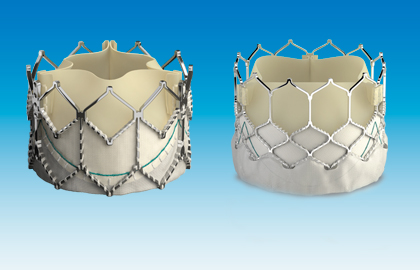Courtesy of del Dr. Carlos Fava.

301 patients presenting bicuspid aortic valve undergoing transcatheter aortic valve replacement (TAVR) were analyzed. 199 of these patients receive a first generation valve (FG) (Sapien XT: 87 y CoreValve: 112) and 102 a new generation valve (NG) (Sapien 3: 91 y Lotus: 11).
Populations were similar, except for ejection fraction, which resulted lower in those receiving NG (52.9% vs. 47.5%; p=0.004).
Device success rate was higher in those receiving NG:
NG: 92.2%
FG: 80.9%
[p=0.01]
Mild or severe paravalvular leak was also lower with NG:
NG: 0%
FG: 8.5%
[p=0.002]
There were no differences in:
- Stroke
- Life threatening bleeding
- Major vascular complications
- Kidney function deterioration
- Safety end points
- Cardiovascular or all-cause mortality in both groups at 30 days and one year (4.3% and 14.1%).
At multivariable analyzis, EuroSCORE ≥20, major bleeding and kidney function deterioration was associated to mortality (stages 2 or 3).
Conclusion
TAVR evolution in patients with bicuspid valve disease is favorable. New generation devices are associated with less paravalvular leak and higher device success.
Editorial Comment
This is the largest series to compare new generation devices against prior devices in this complex scenario to show they are beneficial in terms of device success and absence of paravalvular leak, with no differences in the rest of end points at one year.
Surely, at longer follow up, the presence of mild or severe paravalvular leak would translate into death.
Original Title: Transcatheter Aortic Valve Replacement with Early-and New-Generation Devices in Bicuspid Aortic valve Stenosis.
Reference: Sung-Han Yoon et al. J Am Coll Cardiol 2016;68:1195-205.
Courtesy of Dr. Carlos Fava. Favaloro Foundation, Buenos Aires, Argentina.
We value your opinion. You are more than welcome to leave your comments, questions or suggestions here below.



